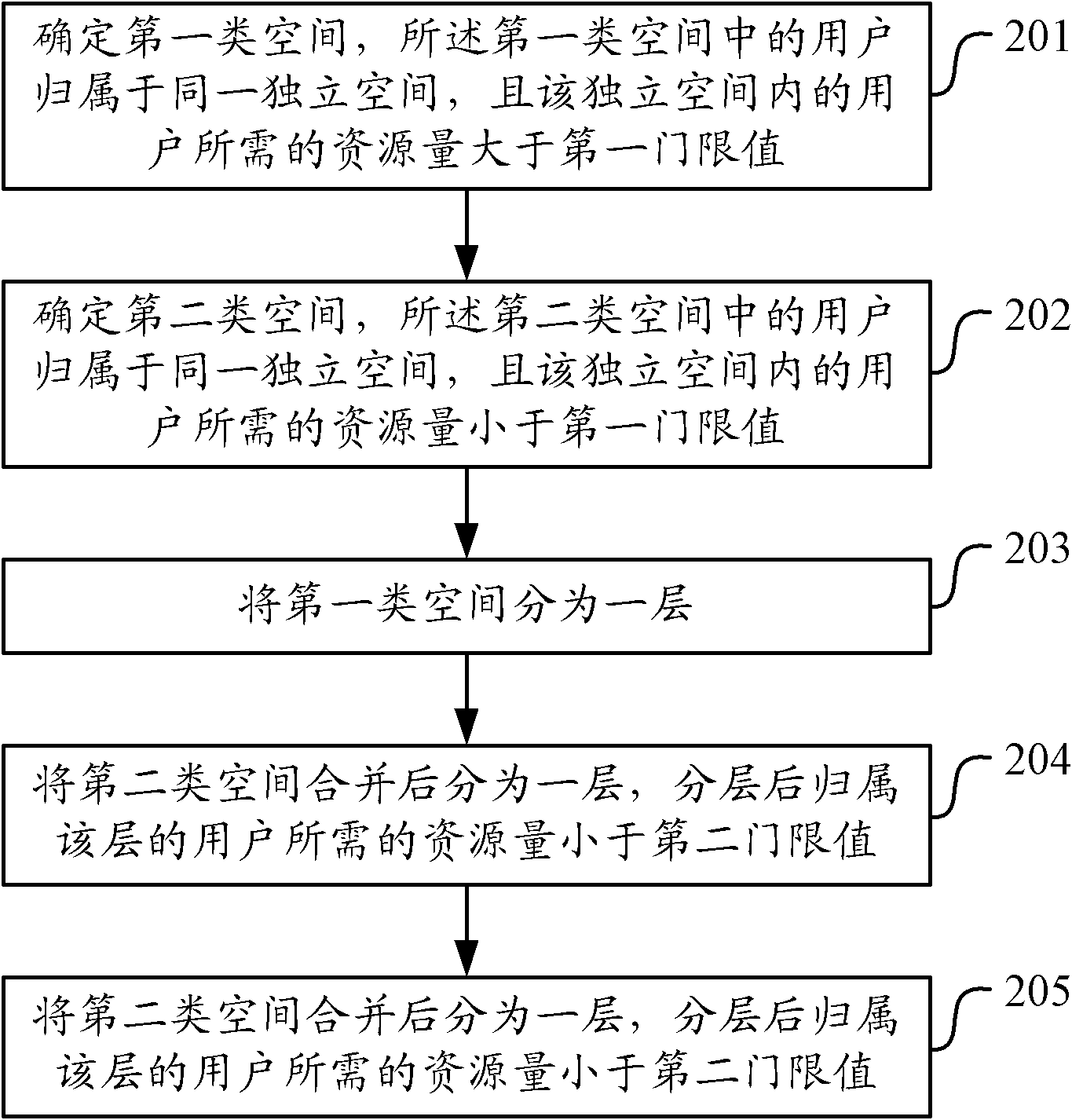Resource layering method and device of spatial division multiple access system
A space-division multiple access and resource technology, applied in diversity/multi-antenna systems, space transmit diversity, electrical components, etc., can solve the problems of uneven resource load, high scheduling signaling overhead, etc., and reduce resource redistribution the number of times, reduce signaling overhead, and reduce the effect of resource stratification
- Summary
- Abstract
- Description
- Claims
- Application Information
AI Technical Summary
Problems solved by technology
Method used
Image
Examples
Embodiment Construction
[0024] The SDMA system based on physical isolation mainly refers to the technology of realizing resource reuse through physical isolation between users (such as loss between floors of buildings), that is, the base station can allocate the same time for users in different independent spaces. Frequency resources, thereby improving resource utilization, greatly improving system throughput and user data transmission rate.
[0025] First, the concept of layers is explained. The SDMA system is a technology for spatial multiplexing through spatial isolation. For example, in an N-story building, if the isolation between floors is large enough, each floor can see As an independent space, it can be regarded as no interference between independent spaces, so the same time-frequency resource can be reused, and the multiplicity of time-frequency resource reuse is the number of resource layers. In the actual networking, each building can be regarded as one floor, and the maximum number of fl...
PUM
 Login to View More
Login to View More Abstract
Description
Claims
Application Information
 Login to View More
Login to View More - R&D
- Intellectual Property
- Life Sciences
- Materials
- Tech Scout
- Unparalleled Data Quality
- Higher Quality Content
- 60% Fewer Hallucinations
Browse by: Latest US Patents, China's latest patents, Technical Efficacy Thesaurus, Application Domain, Technology Topic, Popular Technical Reports.
© 2025 PatSnap. All rights reserved.Legal|Privacy policy|Modern Slavery Act Transparency Statement|Sitemap|About US| Contact US: help@patsnap.com



